Case 5: Platelet Refractoriness

Platelet crossmatch is an effective screening test for antibody-mediated platelet refractoriness
At first I didn’t understand the testing methods for platelet refractoriness, so I drew these cartoons during/after KreuterMD’s interactive teaching session yesterday and learned a lot in the process!
The first test at that should be ordered when a patient has platelet refractoriness is the platelet crossmatch. This will help you determine if the mechanism is immune-mediated or if you should consider another cause (e.g. splenomegaly)
This test uses allows donor platelets to come into contact w patient sera, which may contain platelet antibodies ➡️ allow cross linking with AHG ➡️ add indicator erythrocytes (which can bind plt antibodies)
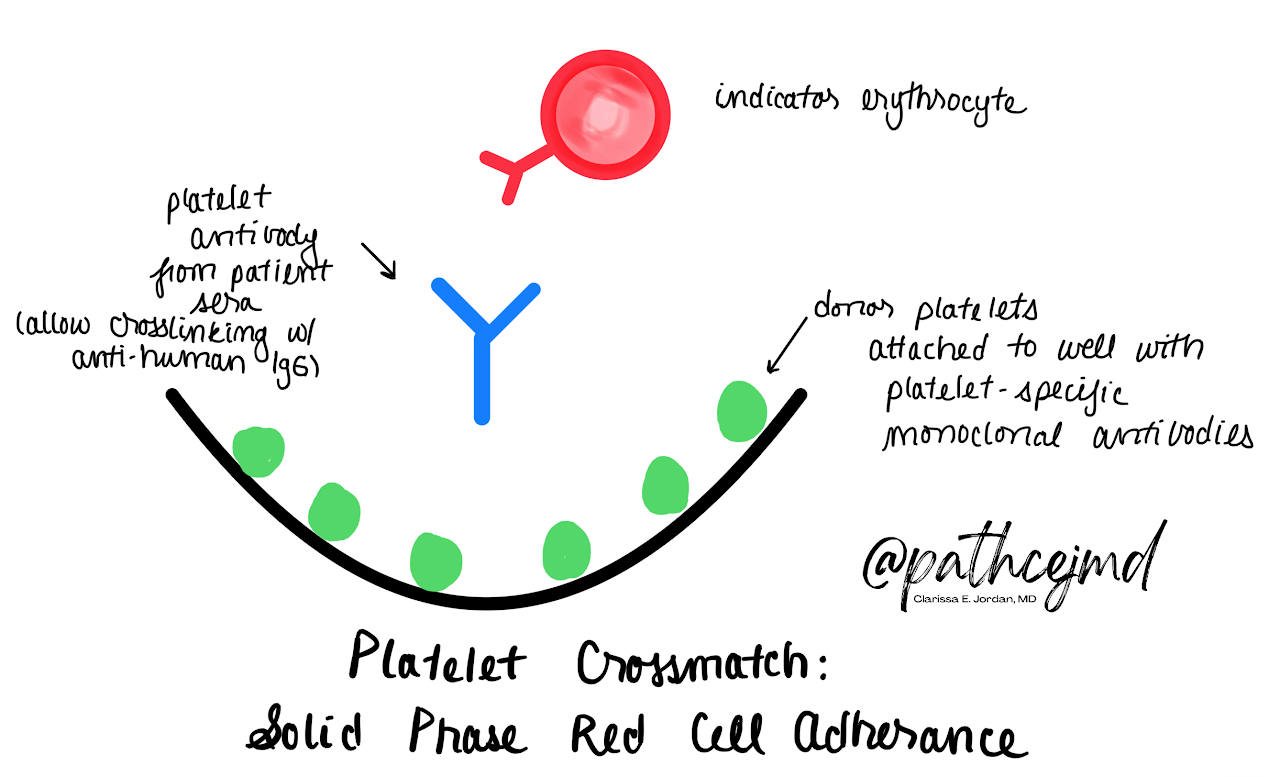
How do you interpret this test?
➕: antibodies & indicator RBCs bind to the donor platelets coating the well (RBCs are spread out)
➖: RBCs are not bound up ➡️ collect as a cell button in the well after centrifugation
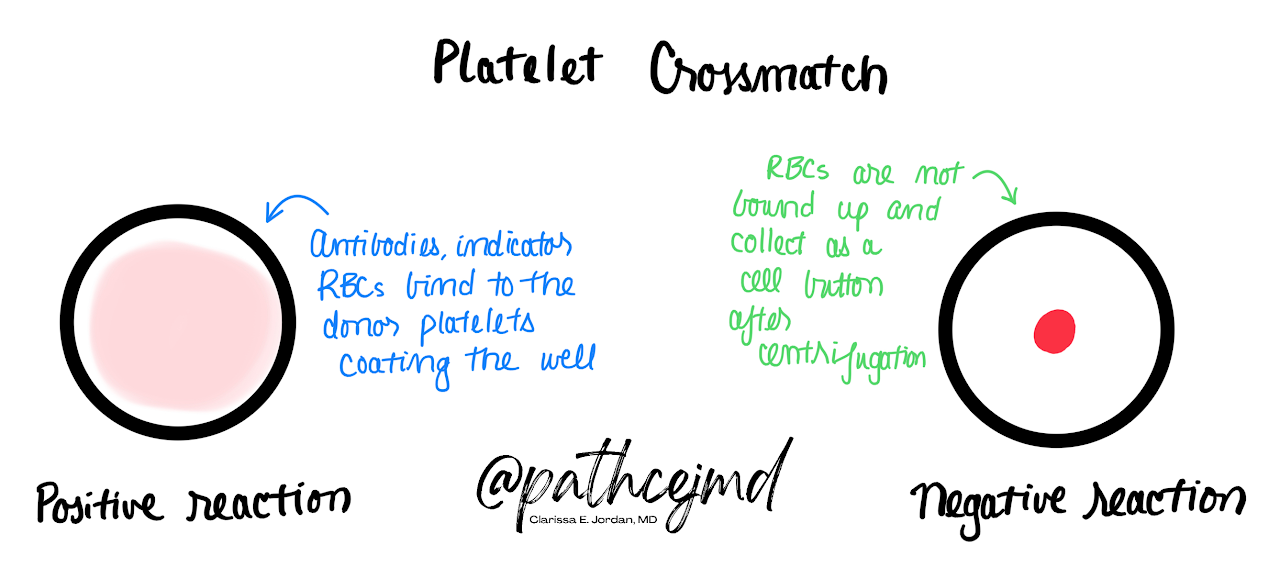
What if you have a positive platelet crossmatch?
Evaluate with single antigen bead (SAB) test to identify the specific HLA antibodies that are responsible ⬇️
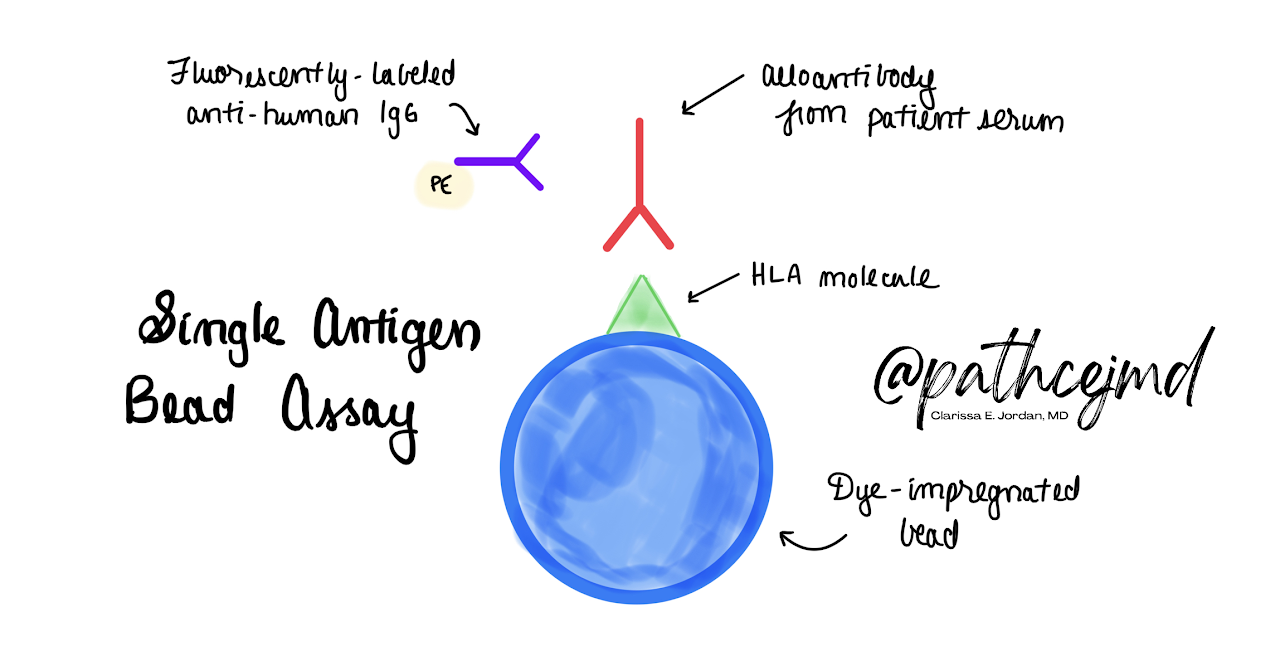
The SAB assay uses dye-impregnated beads with attached HLA molecules, patient serum, and fluorescently-labeled AHG
Similar to flow, lasers can detect the specific bead based on its fluorophore and the presence of the bound HLA antibody due to the labeled AHG
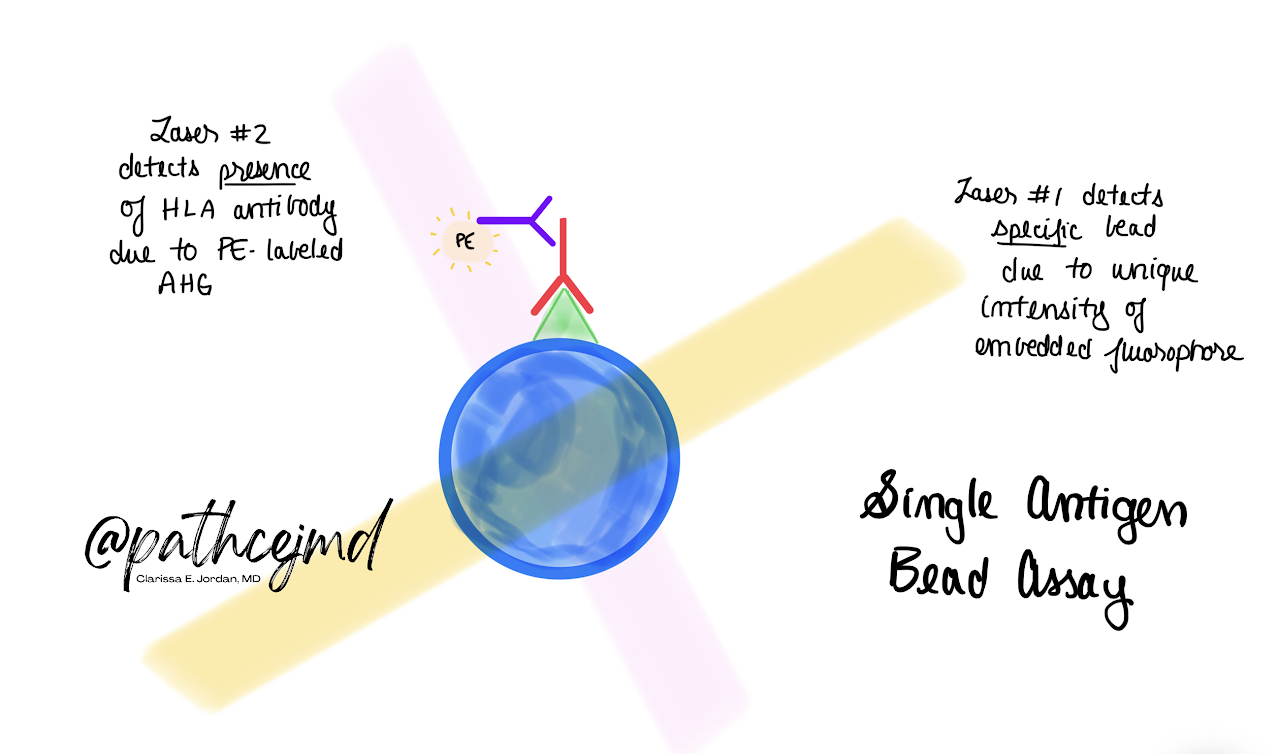
Platelet serum antibody screen: detect human platelet antigen (HPA) antibodies.
Two scenarios for this:
1️⃣ Patient has Ab to both HLA and HPA
2️⃣ Patient has Ab to HPA only
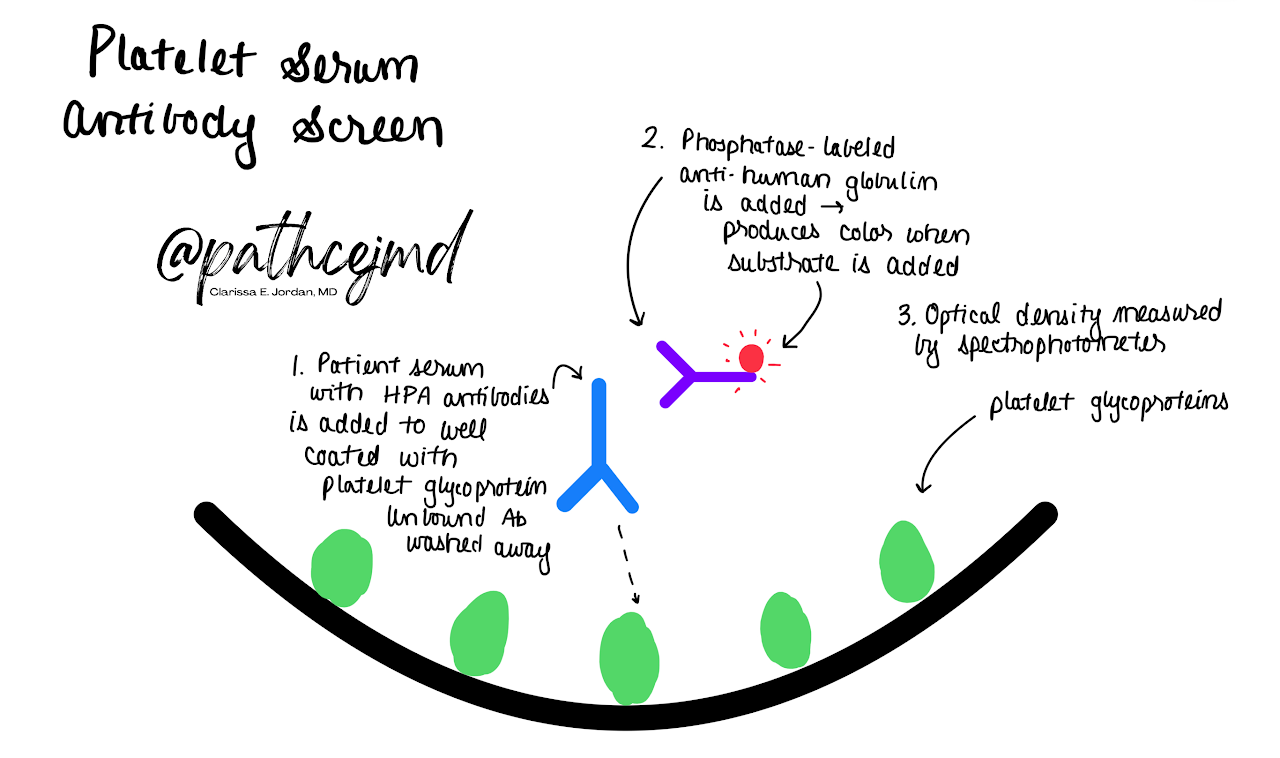
In scenario 1️⃣ crossmatch is incompatible, SAB is ➕, and patient is still refractory even after given matched platelets
Scenario 1️⃣ is more likely since patients who have HPA antibodies will probably have HLA antibodies (HLA is more immunogenic than HPA)
In scenario 2️⃣, crossmatch would be incompatible and SAB would be ➖
That's all! Thanks for following along!
Find this case on Twitter:
🩸 #Blooducation #tweetorial 🧵
— Clarissa E. Jordan, MD (@pathcejmd) February 23, 2022
Which of the following tests should be ordered 1st in the w/u for platelet refractoriness?
Scroll⬇️for some #PathDoodles on transfusion med testing!#PathTwitter #MedEd @MayoClinicPath
(P.S. Always learning - I welcome any feedback!)